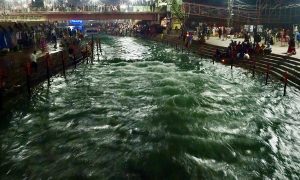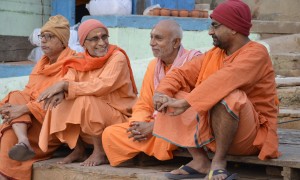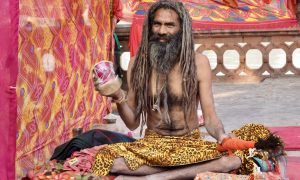If you’ve been following DesignDestinations, you know we toured the Northern Plains of India on an Abercrombie and Kent trip recently. The tour was packed with “old buildings.” Seems like every day we visited a palace, a fort or a temple–sometimes a series of them.
Interesting. I loved it. Seeing these historic structures is a great way to learn the history of the area–how the people lived and worked, where they fought their battles and worshiped their gods.
Now that I’m home, it is tending to all blur together so I decided to focus this blog post on the highlights of what I remember. What stands out in my mind now that I am home and immersed in the minutiae of every day life.
First of all, Fort refers to whole towns–walled for protection and housing thousands of people, most of whom are there to service the ruler (Raja, Maharaja, King or whatever name he went by) and his family, extensive harem and military.
Probably the one that sticks out in my mind most is Fatehpur Sikri. Construction began in the desert starting in 1570, not too far from Agra, site of the Taj Mahal, with a mix of Indian architecture, Persian and Islamic architecture.. Taking 15 years to build, it served as the capital for 14 years. It is a huge structure that housed almost 30,000 people but only for 22 some years. The story is that it was abandoned because of lack of water.
The grounds are amazing–built of red stone and encompassing buildings and courtyards for all aspects of life–including the Elephant Stamping ground. This is where the king sat in judgment of all wrong doers, flanked by a couple of wives to consult with. If he deemed the person on trial was guilty, the person would be chained to a post and then specially trained elephants would stomp on him until he died.
The area now is a peacefully grassy spot, with only a small post to remind one of it’s bloody past.
Another fort and palace I enjoyed was the Amber Fort outside the city of Jaipur.
The king, according to our guide, led a rough life defending himself from invaders, touring his kingdom, dealing with the fierce elements of the desert so when he returned home, he wanted luxury. And he got it. His apartments were stunning. All the silver made me think of a 1960s Disco Parlor.
His 12 wives were located nearby, always bathed, perfumed and waiting to provide company and pleasure.
But what interested me most was the guide’s statement. “Part of the reason for building these fabulous palaces, forts and military housing was to keep the people busy. It was a bit of a public works project,” he explained.
Then he said, “These structures are still providing employment. A major industry in this area is tourism. This Palace provides jobs for folks like me and everyone else who makes sure you have a terrific time when you visit us.”
I looked around at guides, souvenir hawkers, elephant drivers, the guys who brought us from our bus to the palace on little jeeps and understood. A lot of people are working today because of that king. And then there’s the hotels, restaurants, touristy shops, yadayadya. The palace is keeping a lot of food on the table for the locals, including these snake charmers.
I’ve been to a lot of palaces, chateaus and villas in my life. I like touring them whenever we travel. In fact, this trip made me think in an odd sort of way of a trip Jack and I made on a student budget when we were first married. We traveled from London to Inverness Scotland, visiting a “castle a day.” I was immersed in English history then. This trip was like that–temple, fort or palace a day.
I have never visited one with quite the structure that the palace in Udipur boasted. Actually the City Palace there is now four structures–two hotels, private housing for the Royal Family and the historic palace, built and added onto over 400 years.
What interested me was that unlike Western style grand residences, I saw no big stairway, grand hall or the like. Instead the palace was built with a series of inner courtyards, used for entertainment, business, gathering or whatever and the passage ways connecting them and the private apartments were narrow and winding and difficult to navigate.
We were told that this was so invaders couldn’t reach the royal family. Not being able to see around the many corners of the maze like steps and stairs, they risked having their heads chopped off by hidden guards. Made sense but, my-o-my, it must have been a real job for servants to navigate all the steps and stairs, ups and downs, to perform their royal duties.
Something else I found interesting about this palace was the mosaic of the Peacock, the national bird of India. This piece of art was created over a hundred years prior to the advent of Art Deco in France. Hmmmm. Wonder where the French got their inspiration?
The last palace I will mention is one we stayed in. It’s the Taj Lake Palace in the middle of a lake in Udipur. Stunning destination. Would be a great spot for a wedding……
Originally it was built by a young royal to be a “pleasure palace.” Evidently the fellow had so many wild parties that his father, the king, said, “Enough of this in my house …..uhhhhh…I mean palace……build your own and take all this revelry and commotion elsewhere.”
So the Prince did and the palace in the middle of the lake turned into quite the non-stop fun destination. In recent years it was renovated as an absolutely astounding hotel that caused me to cancel out on some of the sightseeing to be able to relax and enjoy the surroundings. If you look at these photos you can see why. Truly a DesignDestination.
Is this history repeating itself? I wonder what the young prince would think of his party place reinvented as a pleasure palace for tourists.

I’ve run out of time and energy. Going to explore the Temples separately. The ones at Khajuraho deserve their own blog. Click on the link and you’ll see why.




























Comments
1 CommentAhhhh, India | DesignDestinations
Apr 20, 2016[…] what is it? The temples. The palaces. The colors. The camels. The elephants. The religious practices. The food. The music. The […]